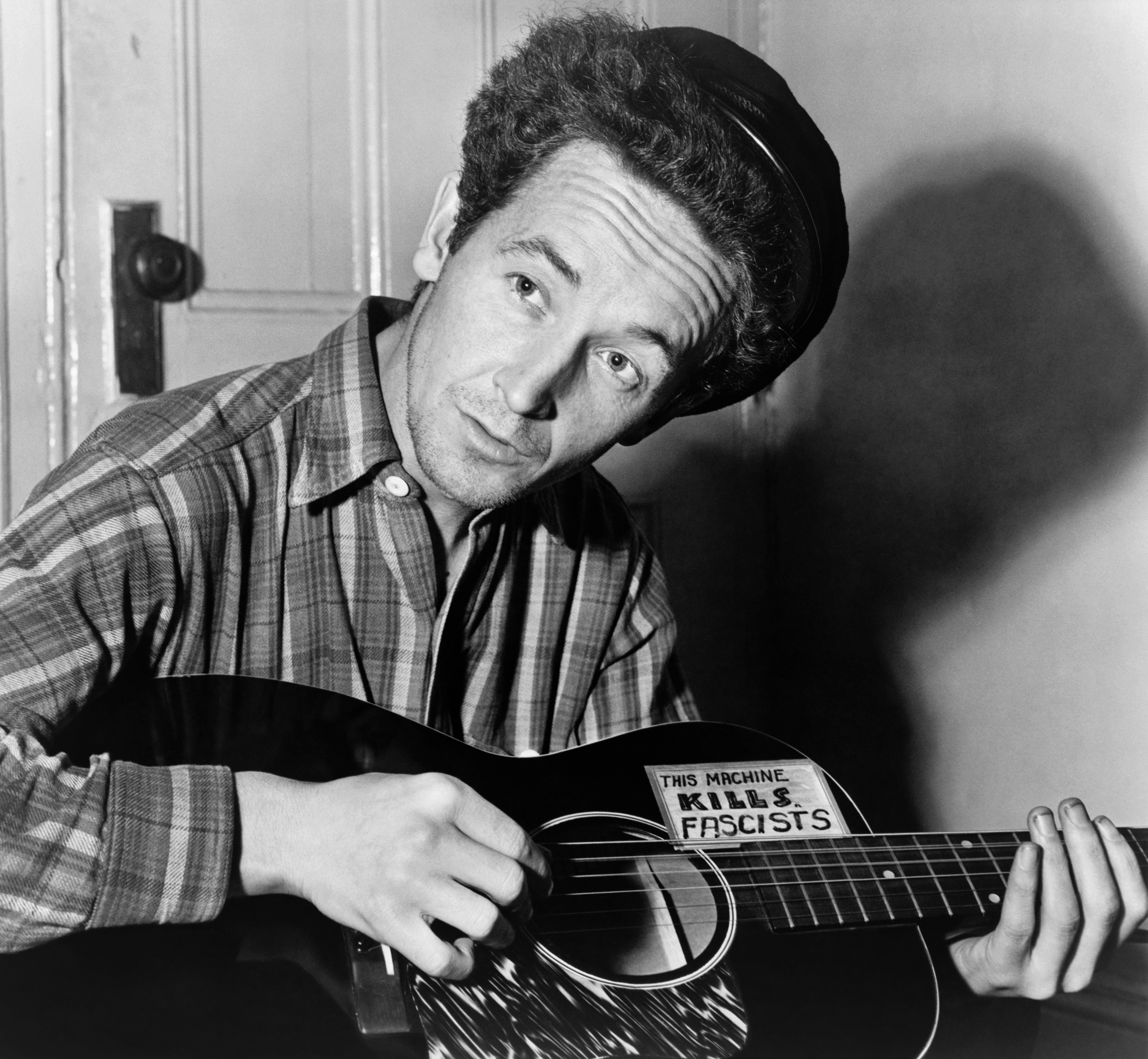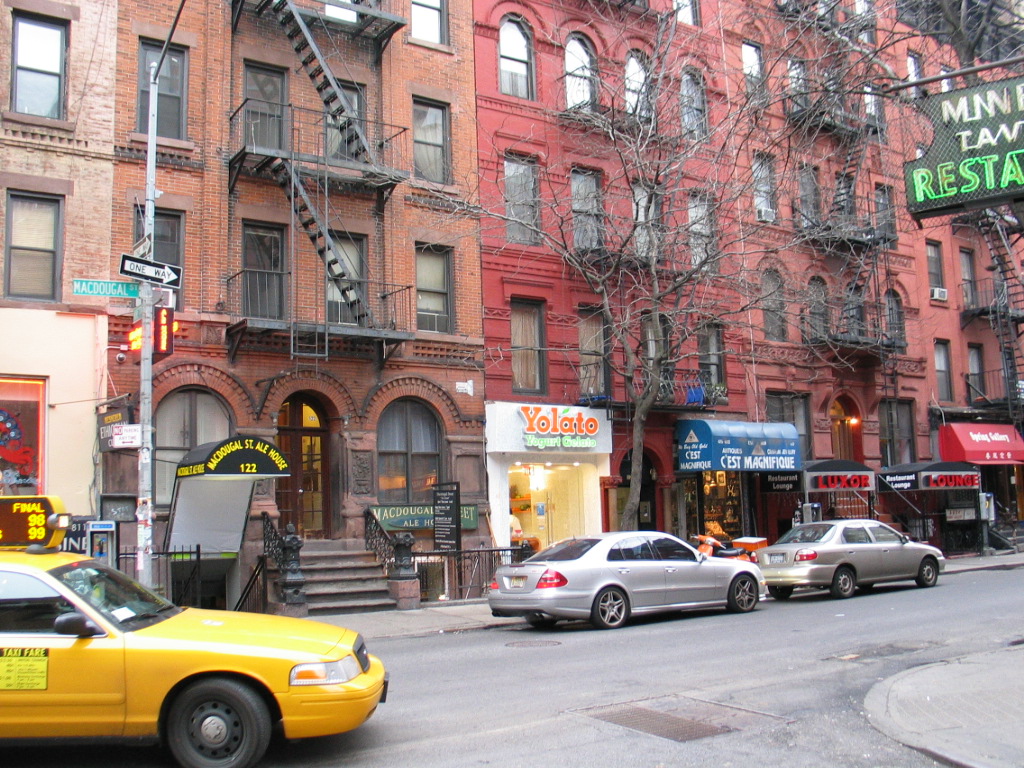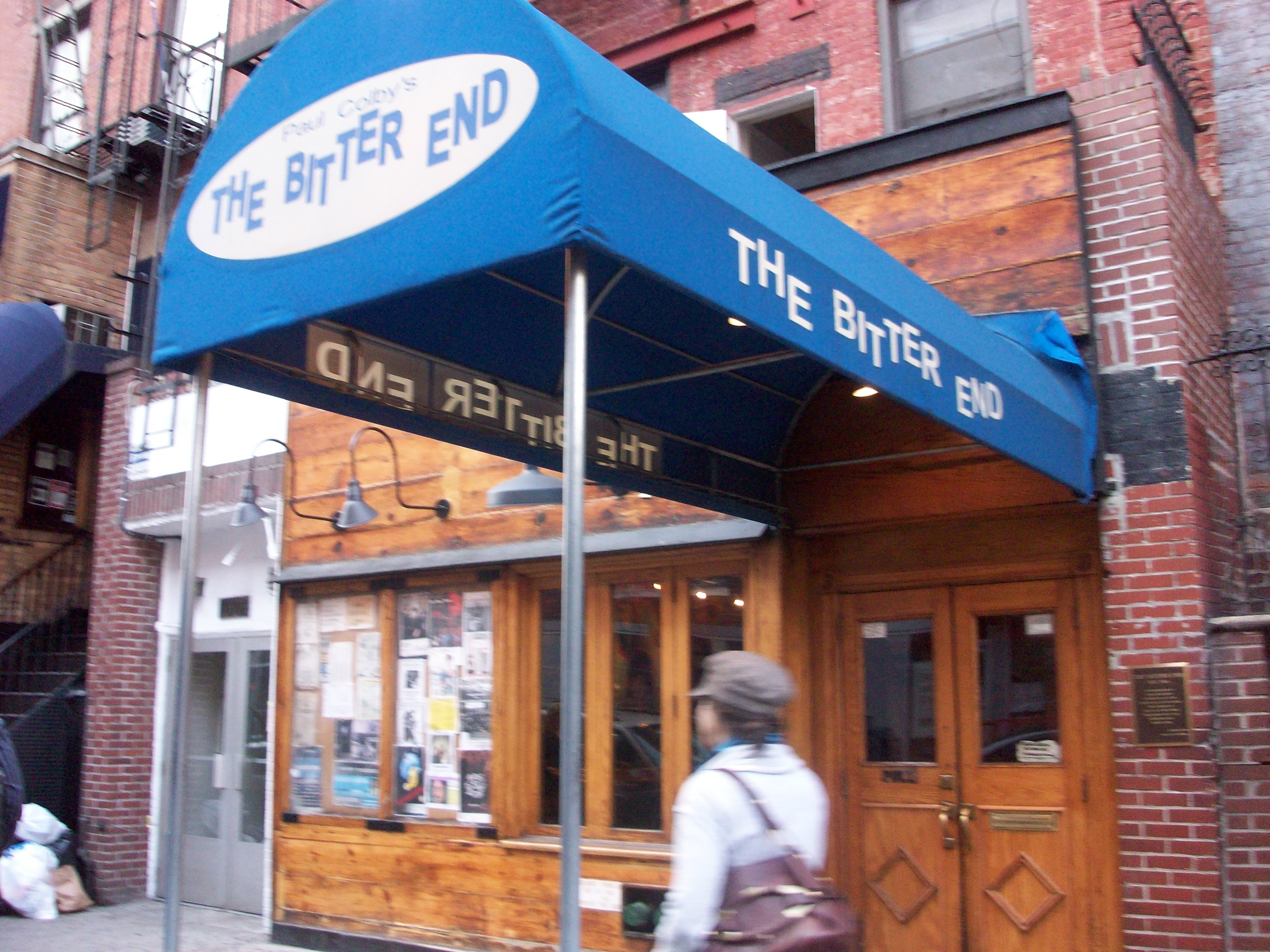|
Peter, Paul And Mary
Peter, Paul and Mary were an American Contemporary folk music, folk group formed in New York City in 1961 during the American folk music revival. The trio consisted of Peter Yarrow (guitar, tenor vocals), Paul Stookey (guitar, baritone vocals), and Mary Travers (contralto vocals). The group's repertoire included songs written by Yarrow, Luis Manuel and Stookey, early songs by Bob Dylan, and covers of other folk musicians. They were very successful in the early- and mid-1960s, with their debut album topping the charts for weeks, and helped popularize the folk music revival. Following Travers's death in 2009, Yarrow and Stookey continued to perform as a duo. Yarrow died in 2025, leaving Stookey the sole surviving member of the group. Travers said she was influenced by Woody Guthrie, Pete Seeger, and the Weavers. In May 1963, Stookey described the formation and dynamics of the group on Folk Music Worldwide, an international short-wave radio show in New York City. In the 2004 doc ... [...More Info...] [...Related Items...] OR: [Wikipedia] [Google] [Baidu] |
Contemporary Folk Music
Contemporary folk music refers to a wide variety of genres that emerged in the mid-20th century and afterwards which were associated with traditional folk music. Starting in the mid-20th century, a new form of popular folk music evolved from traditional folk music. This process and period is called the (second) folk revival and reached a zenith in the 1960s. The most common name for this new form of music is also "folk music", but is often called "contemporary folk music" or "folk revival music" to make the distinction. The transition was somewhat centered in the United States and is also called the American folk music revival. Fusion genres such as folk rock and others also evolved within this phenomenon. While contemporary folk music is a genre generally distinct from traditional folk music, it often shares the same English name, performers and venues as traditional folk music; even individual songs may be a blend of the two. While the Romantic nationalism of the first folk ... [...More Info...] [...Related Items...] OR: [Wikipedia] [Google] [Baidu] |
Songwriters Hall Of Fame
The Songwriters Hall of Fame (SHOF) is an American institution founded in 1969 by songwriter Johnny Mercer, music publisher/songwriter Abe Olman, and publisher/executive Howie Richmond to honor those whose work represent and maintain the heritage and legacy of a spectrum of the most beloved English language songs from the world's popular music songbook. It not only celebrates these established songwriters, but is also involved in the development of new English language songwriting talent through workshops, showcases, and scholarships. There are many programs designed to teach and discover new English language songwriters. Nile Rodgers serves as the organization's chairman. The Hall of Fame was formed in 1969, and in 2010, an exhibit was put on display online inside the Grammy Museum at L.A. Live in Los Angeles. The Hall has no permanent place of residence, and because the awards are not televised, there would be no other digital recording of the event for posterity. There ar ... [...More Info...] [...Related Items...] OR: [Wikipedia] [Google] [Baidu] |
Where Have All The Flowers Gone?
"Where Have All the Flowers Gone?" is a folk song written by American singer-songwriter Pete Seeger in 1955. Inspired lyrically by the traditional Cossack folk song "Koloda-Duda", Seeger borrowed an Irish melody for the music, and published the first three verses in ''Sing Out!'' magazine. Additional verses were added in May 1960 by Joe Hickerson, who turned it into a circular song. Its rhetorical "where?" and meditation on death place the song in the '' ubi sunt'' tradition. In 2010, the ''New Statesman'' listed it as one of the "Top 20 Political Songs". The 1962 album version of the song was released as part of the Columbia Records Hall of Fame 45 single series in 1965 as 13–33088. The recording of the song by Pete Seeger was inducted into the Grammy Hall of Fame in 2002 in the Folk category with the release year given as 1964 as a Columbia Records single. Composition Seeger found inspiration for the song in October 1955 while he was on a plane bound for a concert at Oberli ... [...More Info...] [...Related Items...] OR: [Wikipedia] [Google] [Baidu] |
500 Miles
"500 Miles" (also known as "500 Miles Away from Home" or "Railroaders' Lament") is a song made popular in the United States and Europe during the 1960s folk revival. The simple repetitive lyrics offer a lament by a traveler who is far from home, out of money and too ashamed to return. In a May 1963 interview on Folk Music Worldwide, Paul Stookey of Peter, Paul and Mary characterized the song, which appeared on the group's 1962 debut album, as "a reflection of loneliness." History The song is generally credited as being written by Hedy West,Blood, Peter and Annie Patterson (eds), '' Rise Up Singing'', Sing Out Corporation, Bethlehem, Pennsylvania , United States, 1992, p. 232Anderson, Yohann (ed), ''Songs'', Songs and Creations, Inc., San Anselmo, California, United States, 1983, p. 29 and a 1961 copyright is held by Atzal Music, Inc. "500 Miles" is West's "most anthologized song". Some recordings have also credited Curly Williams, or John Phillips as co-writers, although Phi ... [...More Info...] [...Related Items...] OR: [Wikipedia] [Google] [Baidu] |
Lemon Tree (Will Holt Song)
"Lemon Tree" is a folk song written by Will Holt in the late 1950s. Inspired by a Brazilian song, ''Meu limão meu limoeiro'', originally written in 1930. Background The tune is based on the Brazilian folk song '' Meu limão, meu limoeiro'', arranged by José Carlos Burle in 1937 and made popular by Brazilian singer Wilson Simonal. The song compares love to a lemon tree: "Lemon tree very pretty, and the lemon flower is sweet, but the fruit of the poor lemon is impossible to eat." Trini Lopez recording In 1965, Trini Lopez recorded the most successful version of the song which hit number twenty on the ''Billboard'' Hot 100 and number two on the ''Billboard'' Middle Road Singles chart. “I remember meeting Trini Lopez,” Holt told '' Portland Magazine'' in 2013. “He was a sweet guy, really charming. I heard his version of ‘Lemon Tree,’ and I thought, that's another take of the song.” Other recorded versions The song has also been recorded by: *Peter, Paul and Mar ... [...More Info...] [...Related Items...] OR: [Wikipedia] [Google] [Baidu] |
Peter, Paul And Mary (album)
''Peter, Paul and Mary'' is the debut studio album by American folk trio Peter, Paul and Mary, released in May 1962 on Warner Bros. Records. in hitparade.ch Released in both mono and stereo on catalog no. 1449, it is one of the rare folk albums to reach No. 1 on the ''Billboard'' chart in the US, where it remained for over a month. The lead-off singles " If I Had a Hammer" and " Lemon Tree" reached numbers 10 and 35 respectively on the ''Billb ... [...More Info...] [...Related Items...] OR: [Wikipedia] [Google] [Baidu] |
Greenwich Village
Greenwich Village, or simply the Village, is a neighborhood on the west side of Lower Manhattan in New York City, bounded by 14th Street (Manhattan), 14th Street to the north, Broadway (Manhattan), Broadway to the east, Houston Street to the south, and the Hudson River to the west. Greenwich Village also contains several subsections, including the West Village west of Seventh Avenue (Manhattan), Seventh Avenue and the Meatpacking District, Manhattan, Meatpacking District in the northwest corner of Greenwich Village. Its name comes from ''Groenwijck'', Dutch language, Dutch for "Green District". In the 20th century, Greenwich Village was known as an artists' haven, the Bohemianism, bohemian capital, the cradle of the modern LGBTQ social movements, LGBTQ movement, and the East Coast birthplace of both the Beat Generation and counterculture of the 1960s. Greenwich Village contains Washington Square Park, as well as two of New York City's private colleges, New York University (NYU) ... [...More Info...] [...Related Items...] OR: [Wikipedia] [Google] [Baidu] |
Folk Music
Folk music is a music genre that includes #Traditional folk music, traditional folk music and the Contemporary folk music, contemporary genre that evolved from the former during the 20th-century folk revival. Some types of folk music may be called world music. Traditional folk music has been defined in several ways: as music transmitted orally, music with unknown composers, music that is played on traditional instruments, music about cultural or national identity, music that changes between generations (folk process), music associated with a people's folklore, or music performed by Convention (norm), custom over a long period of time. It has been contrasted with popular music, commercial and art music, classical styles. The term originated in the 19th century, but folk music extends beyond that. Starting in the mid-20th century, a new form of popular folk music evolved from traditional folk music. This process and period is called the (second) folk revival and reached a zenith ... [...More Info...] [...Related Items...] OR: [Wikipedia] [Google] [Baidu] |
The Bitter End
The Bitter End is a 230-person capacity nightclub A nightclub or dance club is a club that is open at night, usually for drinking, dancing and other entertainment. Nightclubs often have a Bar (establishment), bar and discotheque (usually simply known as disco) with a dance floor, laser lighti ..., coffeehouse and folk music venue in New York City's Greenwich Village. It opened in 1961 at Bleecker Street, 147 Bleecker Street under the auspices of owner Fred Weintraub. The club changed its name to ''The Other End'' in June 1975. However, after a few years the owners changed the club's name back to the more recognizable The Bitter End. It remains open under new ownership. History An earlier club, The Cock and Bull, operated on the same premises with the same format, in the late 1950s. The poet and comedian Hugh Romney, who later became known as Wavy Gravy, read there. The Bitter End was originally a coffeeshop. According to ''The New York Times'', "The Bitter End, which ope ... [...More Info...] [...Related Items...] OR: [Wikipedia] [Google] [Baidu] |
Carolyn Hester
Carolyn Sue Hester (born January 28, 1937) is an American folk singer and songwriter. She was a figure in the early 1960s American folk music revival. Biography Hester's first album was produced by Norman Petty in 1957. She made her second album for Tradition Records, run by the Clancy Brothers, in 1960. She became known for " The House of the Rising Sun" and " She Moved Through the Fair". Hester was one of many young Greenwich Village singers who rode the crest of the 1960s folk music wave, helping launch Gerde's Folk City in 1960. She appeared on the cover of the May 30, 1964 issue of the ''Saturday Evening Post''. According to Don Heckman of the ''Los Angeles Times'', Hester was "one of the originals—one of the small but determined gang of ragtag, early-'60s folk singers who cruised the coffee shops and campuses, from Harvard Yard to Bleecker Street, convinced that their music could help change the world." Hester, dubbed "The Texas Songbird," was politically active, sp ... [...More Info...] [...Related Items...] OR: [Wikipedia] [Google] [Baidu] |



